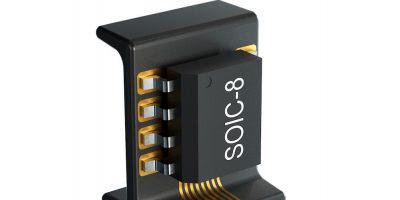Component carrier replaces flexible PCBs
Flexible circuit boards are made of thin polymide films and are designed into space constrained, shaped and flexible designs. They are complex to populate, assemble and fix but Harting has developed a component carrier based 3D mechatronic integrated device (3D-MID) technology that is capable of replacing flexible circuit boards. They also save up to two thirds of the cost of conventional flexible circuit boards.
At the MID process, on the injection moulded part a customised layout is applied. At electronic assembly the components are mounted on the desired surface.
The 3D-MID technology enables electronic components to be fitted directly onto a three-dimensional body without the need for circuit boards or connecting cables. The base body is produced through injection moulding, where the thermoplastic is provided with a non-conductive, inorganic additive. In order for this material to be able to accommodate electrical circuits, the additives in the plastic are activated through laser direct structuring (LDS). In this process, the laser beam writes the areas intended for the conductive tracks and creates a micro-rough structure. The metal particles released in the process form the nuclei for the subsequent chemical metallisation.
This process creates electrical traces across the three-dimensional base body. The plastic employed offers high thermal stability and can therefore be soldered in the reflow oven. Electronic components can be fitted directly onto the component carrier, replacing flexible circuit boards. The component carrier serves as a connecting element between the PCB and electronic components such as LEDs, ICs, photo diodes and sensors.
Electronic components are mounted directly on the component carrier in automated processes. There is no need for the complex processes involved in processing flexible circuit boards, which reduces costs by up to two thirds, said Harting.
The populated component carriers are delivered in tape and reel. The standard design enables the carriers to be processed in automatic assembly systems, just like other surface mount electronic components. Two sizes are currently available and can accommodate electronic components of standard size SOIC-8 and smaller. Harting can also produce the carriers in customer-specific sizes.
Harting has identified three example applications where the component carrier can replace flexible circuit boards: when components are sited at a 90 degree angle to the circuit board, for clearance from the circuit board or the carrier can also be used for an antenna function.
The smaller design of the component carrier is suitable for components of size SOT23 and smaller – with its dimensions of approximately 5.0 x 4.0 x 3.0mm.




